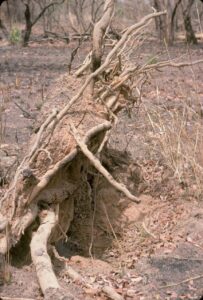How to Propagate Acacia koa

Propagating Acacia koa: The Koa Tree
Introduction
Acacia koa, commonly known as Koa, is an iconic Hawaiian tree prized for its beautiful, richly colored wood and its significant ecological role in the Hawaiian rainforest ecosystem. Its distinctive, silvery-green foliage and attractive, rounded crown make it a popular choice among gardeners, although its size necessitates ample space. Propagating Koa presents unique challenges due to its specific environmental needs and the relatively recalcitrant nature of its seeds. Understanding these challenges is crucial for successful cultivation.
Seed Germination
Seed germination is a viable method for Acacia koa propagation, but it presents significant hurdles. The seeds possess a hard seed coat which inhibits water uptake, a common characteristic of many Acacia species. This necessitates pre-treatment to break dormancy.
Challenges: Low germination rates are common without proper scarification. Fungal diseases can also attack seedlings, especially in humid conditions.
Practical Tips: Seed scarification is essential. Methods include mechanical scarification (nicking the seed coat with a file or sandpaper) or soaking the seeds in boiling water for a short period (around 1 minute), followed by soaking in warm water for 24-48 hours. Sowing should be done in a well-draining seed starting mix in a warm, humid environment. Adequate ventilation is crucial to minimize fungal growth. Germination generally occurs within a few weeks to several months depending on treatment effectiveness and environmental conditions.
Rewards: Seed germination offers the benefit of genetic diversity, resulting in a wider range of genetic characteristics within the propagated population. This method also has potential for large-scale propagation, though success rates need careful management.
Cuttings
Currently, there are no known reliable methods for propagating Acacia koa from cuttings. The tree’s physiology appears to resist rooting from stem or branch cuttings, unlike some other Acacia species.
Division
Division is not a feasible method for propagating Acacia koa. This tree develops a large, deep taproot system making division impractical and likely lethal to the plant.
Tissue Culture
Tissue culture offers a promising avenue for propagating Acacia koa, although it requires specialized laboratory equipment and expertise.
Challenges: Establishing aseptic conditions and developing effective culture media are crucial, requiring specialized knowledge and experience. The protocols for successful Acacia koa tissue culture are still under development and not widely accessible.
Practical Tips: This method requires specialized training and facilities. Research into established protocols for related Acacia species may provide a starting point.
Rewards: Tissue culture offers the potential for mass propagation of genetically identical plants (cloning), preserving desirable traits, and producing disease-free plants.
Conclusion
Propagating Acacia koa presents considerable challenges, particularly when relying on seed germination. While seed germination offers genetic diversity, success relies heavily on proper seed preparation and diligent management of fungal diseases. Cuttings and division are not viable options. Tissue culture offers the most promise for large-scale propagation but demands specialized skills and resources.
The unique satisfaction derived from successfully cultivating Acacia koa, considering the difficulties involved, is immense. The perseverance required is rewarded by the beauty and cultural significance of this majestic Hawaiian tree. Aspiring propagators should begin with seed germination, focusing on meticulous scarification and disease prevention, acknowledging that some failures are inevitable. For large-scale propagation or preservation of specific genetic lines, investment in tissue culture expertise should be considered. The journey of cultivating Koa is a testament to patience, understanding, and respect for this remarkable species.